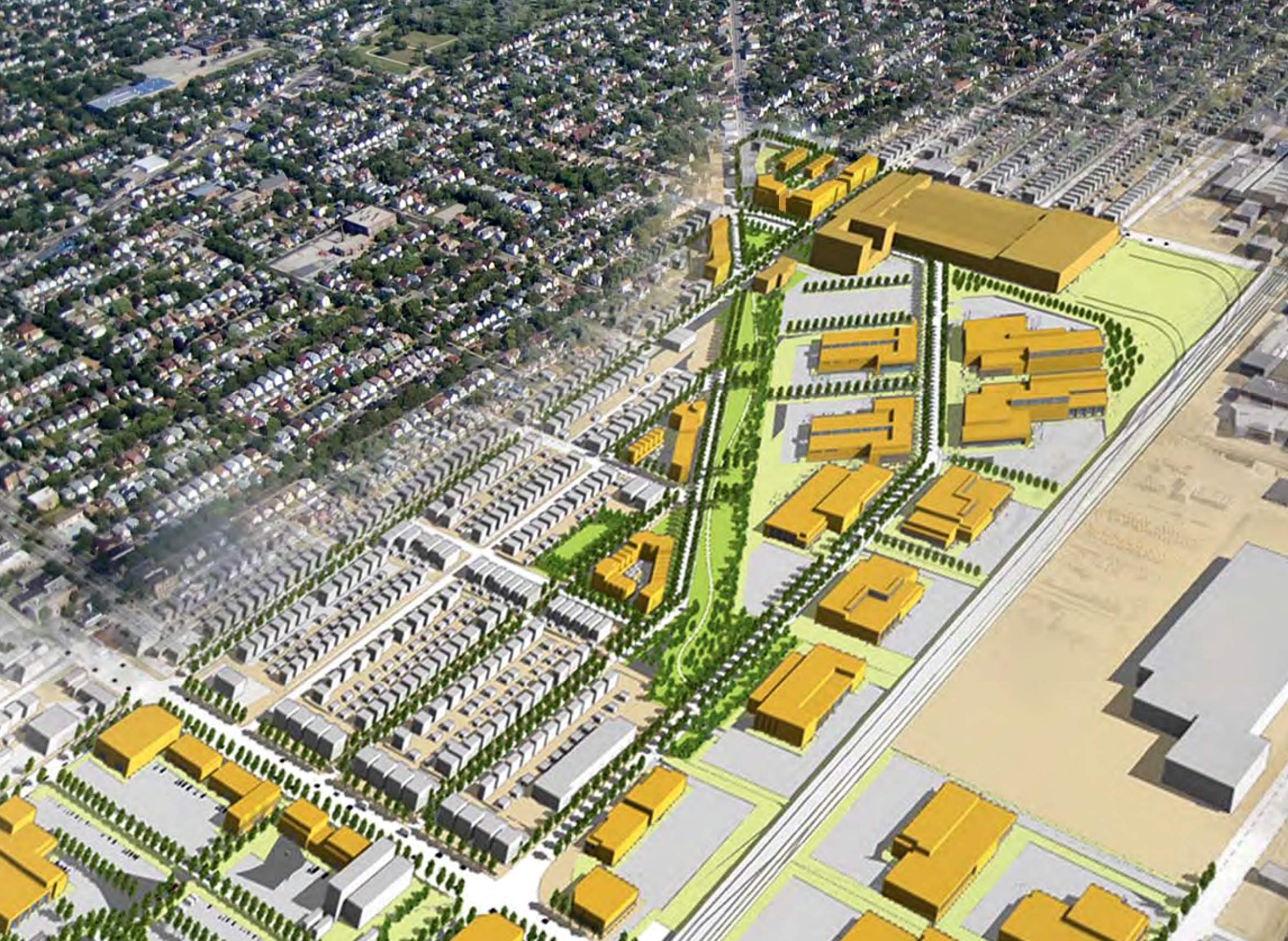
The proposed master plan for the Century City Business Park and the 30th Street Industrial Corridor development project in Milwaukee was unveiled in December 2011.

The proposed master plan for the Century City Business Park and the 30th Street Industrial Corridor development project in Milwaukee was unveiled in December 2011.
The civil unrest that played out this summer in Milwaukee's Sherman Park neighborhood was not just a reaction to an officer-involved shooting – it was a primal scream from a community that desperately seeks the restoration of economic opportunity.
The sense of hopelessness in the inner city began decades ago when big manufacturers left, most notably A.O. Smith. Thousands of family-sustaining jobs were suddenly gone. In 2014, almost a third of the city's unemployed residents lived in the zip codes surrounding the area, according to a University of Wisconsin-Milwaukee economic report.
But city officials and community partners are optimistic about a new project called the Century City Business Park, an 80-acre site located in the heart of the 30th Street Industrial Corridor where A.O. Smith once stood.
Milwaukee Mayor Tom Barrett said there's been tens of millions of dollars invested in the city-owned site, including $25 million to relocate a department of public works facility, and an additional $30 million to get the land ready for use.
He added that the city wants to make sure the right employers come into the area – and once they do, a community that was left decimated by job loss will come back to life.
"The reason I'm so passionate about this is because I think these jobs will go a long way in addressing a lot of the challenges that we have in the central city of Milwaukee," Barrett said. "People want to have jobs where they can support their families. It's that simple."
The city hopes to use the Menomonee Valley as a model, he said. The industrial corridor east of Miller Park baseball stadium was largely derelict until the city poured in $70 million and partnered with the private sector and community partners to transform the area, adding 26 jobs per acre, according to the Public Policy Forum.
"I think what it demonstrates to anybody who cares is that the city of Milwaukee is capable of taking on a large project like this, making the invest up front … and then partnering with the employers," Barrett said.
But this is more than just a real estate deal. This is about workforce development. When A.O. Smith shuttered its doors, it left behind an underutilized workforce. So to those businesses in the suburbs that are saying they're experiencing a skills gap, the mayor would like to make a pitch.
"If those working locations were in Century City, you would have a huge labor supply. And so what we're focusing on is trying have employers understand the value of having jobs right here in the heart of the city," he said.
Willie Wade, a former Milwaukee alderman and now vice president of Employ Milwaukee, said depending on what companies relocate to the area – and both he and the mayor said they're optimistic – there will likely be a need to round out the workforce, which will be helpful in an area that has some of the highest unemployment rates in the state.
Young people might not be ready to enter the workforce for a variety of reasons, many of which are symptoms of poverty itself, said Wade. That's why his group set up the industry advisory board to chronicle what skills and preparation area employers are looking for. They then relay that feedback to a group of more than two dozen organizations that then turnaround that produce that training, and ultimately place them in those specific jobs.
Wisconsin Public Radio, © Copyright 2023, Board of Regents of the University of Wisconsin System and Wisconsin Educational Communications Board.